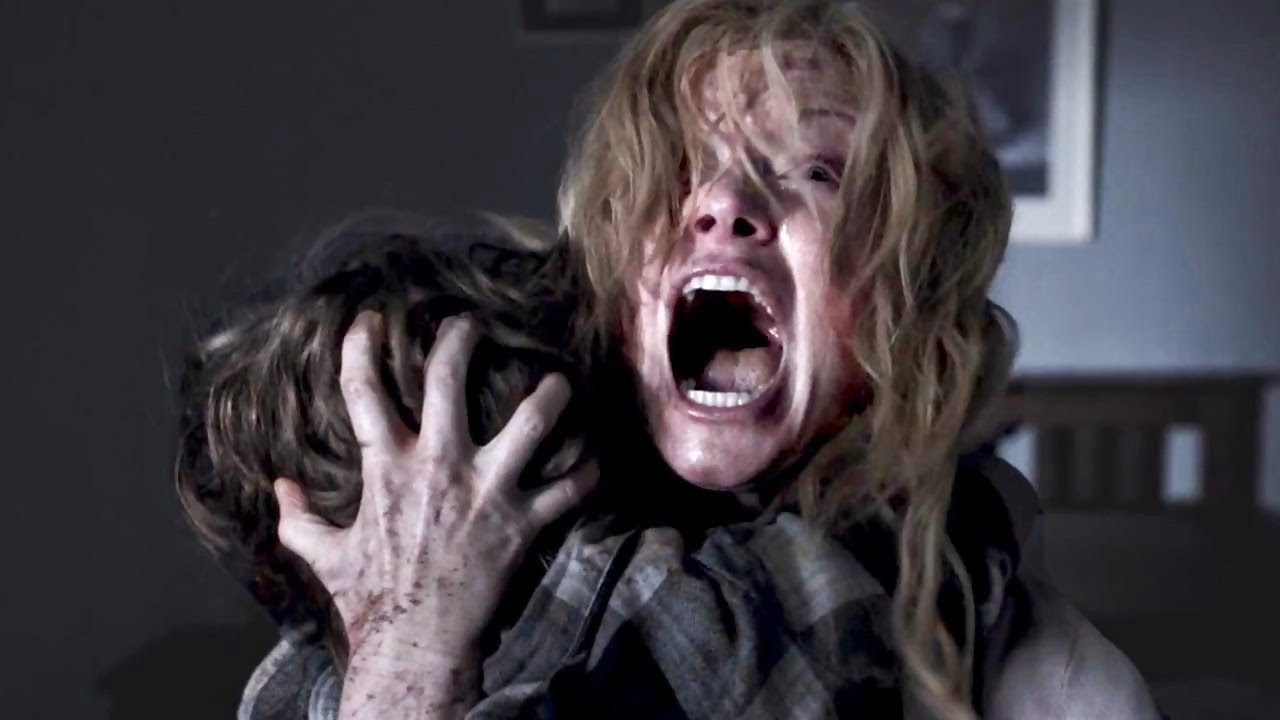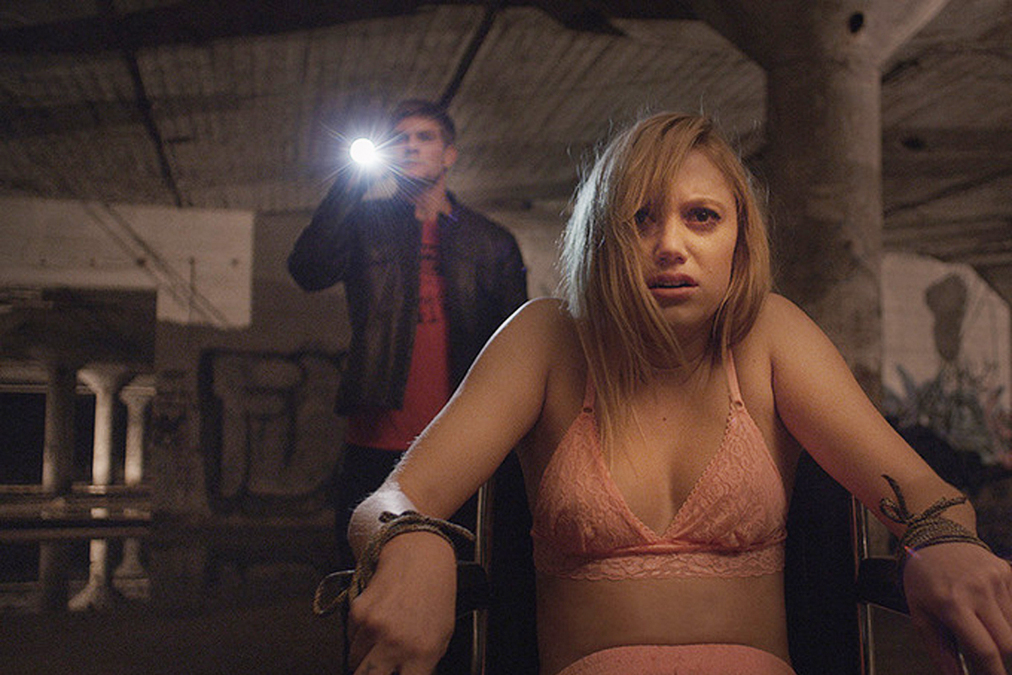Horror Movie Heroines Killin’ It In It Follows And The Babadook


The Babadook and It Follows are the horror movies I’ve been waiting for since I was a little girl. I got hooked on horror young. When I used to hit the local Blockbuster with my family, Halloween and Alien and Psycho were the only flicks with female protagonists that seemed exciting and thrilling to me. I used to find the leading ladies’ survival skills inspiring. As I grew, I understood more and more how problematic the representations of gender in these movies were.
Despite horror’s troubling history, I’m glad I remain a loyal fan and continue to watch each year’s most popular releases because I otherwise would have missed It Follows and The Babadook. Both of these movies are really, really scary. (William Friedkin, director of The Exorcist, tweeted that he has never seen a movie as terrifying as The Babadook.) Both have been well-received. (Um, see William Friedkin’s aforementioned tweet.) And both feature protagonists who deserve the title of heroine.
It Follows is Jay’s story. Jay looks the ingenue part: a thin, blonde wisp of a girl. The movie opens on her peacefully floating adrift in an above-ground pool. She relishes the ease of her aimless adolescence in suburban Detroit. This changes suddenly when she sleeps with Hugh, the guy she has been dating. After they have sex, he chloroforms her, ties her to a wheelchair and gives her a shocking and jarring introduction to It – a shapeshifting demon that will steadfastly track her down on foot and kill her unless she passes It on to her next sexual partner. (And no, It never disguises itself as clown who lives in the sewer system. That’s a different It.)
The Babadook focuses on Amelia, a mother. Though she, too, fits the societal standards for an attractive young woman — thin and blonde — she does not drift carefree through life. She is a single mother in suburban Australia, and she is trapped, surrounded, overwhelmed by pressing responsibilities. Six years earlier, her husband died in a car accident while on the way to her son’s delivery. She loves her son, Samuel, but he, an erratic and needy child, is the root of her stress. One moment, he throws a tantrum. The next, he endearingly crawls into bed with her after a nightmare. Her stress spikes after she reads a mysterious children’s book, “The Babadook,” to Sam, and awakens a haunting in their home.
What do these two women have in common? They are hunted, attacked, terrorized, but they are not victims.

In It Follows, after Jay’s traumatic encounter with Hugh, she calls the police. While questioning her, an officer asks her if the sex was consensual. He towers over her as she sits, crumpled, on her front lawn. She looks up and answers that it was. With this answer, Jay establishes immediately that she is not a victim. She may regret that she let Hugh close to her, but she does not allow this mistake to rob her of her sexual agency, of her right to make her own choices, good or bad. This agency makes her a compelling heroine. Itis a terrifying monster. It is relentless, unfeeling, unnerving. It will 100% give you nightmares. But Jay refuses to be easy prey. At first, she abstains from passing Iton, but after days without sleep, she gives into her neighbor’s urgings to pass It to him, to let him handle the problem for her. His plans fails, and Itkills him before she can save him. She does not look to anyone else again to be her hero. She is not a damsel in distress, but she knew this.
Amelia’s heroism emerges more gradually than Jay’s. I must warn you: if you are a mother or have a mother or know a mother, you might find The Babadook a difficult film to watch. Its depiction of motherhood rages against the romanticized one we often see, the one in which motherhood is blissful and effortless. When you see Samuel wiggle into bed with Amelia and wrap his arms around her, smothering her as she tries to sleep, you find yourself thinking, “Her son is sucking the life force out of her, like a demon.” This isn’t a pretty thought. But it’s true. Samuel is a painful reminder of her husband’s death, a profound loss she never mourned, and his constant demand for love depletes her. The haunting, the Babadook, mirrors her relationship with these ugly emotions, growing stronger the more she denies. It isn’t until she almost loses her son that she works up the courage to confront the Babadook. This is her grand heroic moment. She doesn’t defeat a terrible monster. She does something more impressive: she stops externalizing the demon and takes responsibility for the ugliness within her.
Jay and Amelia are not the doomed sluts or virginal victims of old horror movies. They are strong, self-reliant and, most importantly, flawed. They make mistakes, but they don’t look beyond themselves for rescue.
Both movies end on a powerful yet unexpected note: the monster doesn’t die. The heroines don’t chainsaw their monsters to death. They don’t light them on fire. They don’t obliterate them. They confront the monsters and deal them some blows, but they survive. They persist, always lurking in the shadows. Jay and Amelia have to live with these hauntings the rest of their lives, the way many of us live with our demons every day. But both movies assure us that, if anyone can handle this, they can.
Chloe Cole is a writer at Dorkly. When she isn’t working and arguing with her co-workers about 80s horror movies, she enjoys arguing with her friends about 80s horror movies. And coming up with crazy science fiction premises – like, what would the world be like if every time you orgasmed, you had a 50% chance of blowing up? Check out her work on Dorkly and follow her on twitter @chlocol!
–Please make note of The Mary Sue’s general comment policy.–
Do you follow The Mary Sue on Twitter, Facebook, Tumblr, Pinterest, & Google +?
Have a tip we should know? [email protected]